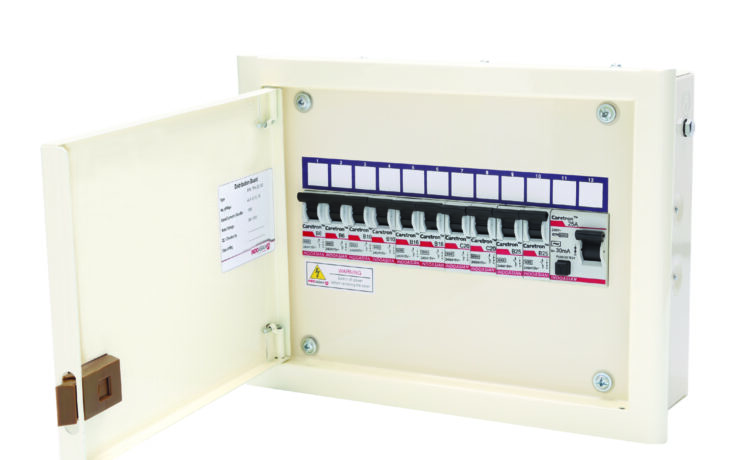The main electrical supply system for any commercial or residential entity is the distribution board. The main cable enters the distribution board and is then dispersed in secondary circuits such as lights and plugs via breakers. It is critical for home and appliance safety to maintain optimum power distribution for the optimal functioning of all devices. BS bars, DIN rail, and a neutral link are installed on distribution boards.
Distribution boards are more than simply an enclosure; they are an entire system with neutral linkages, an earth leakage unit, and interconnecting wires with the express goal of ensuring proper electrical distribution in your home.
Mainly we have Type A or Type B distribution boards. The busbar arrangement and the sort of overcurrent protective device (OCPD) that it takes are referred to by this term. Let us learn better exactly what the difference between these two is.
- The busbar layout on Type A distribution boards is designed to accept single and/or double pole OCPDs. They usually have a horizontal busbar configuration that accommodates multi-pole and/or single-pole OCPDs.
- The busbar configuration on Type B distribution boards is designed to accept multi-pole and/or single pole OCPDs. The OCPDs are usually linked to the sides of a vertical busbar.
- The suitable DP to use when installing in commercial or industrial premises will be determined by compliance with numerous location-specific codes and requirements. You must also consider basic operating conditions and environmental considerations, as well as any ongoing accessibility requirements.
- A sub-distribution board, also known as a sub-board, is a smaller breaker panel that subsidiaries to a bigger distribution board. This, once again, allows for more control and isolation of a selection of smaller circuits and breakers. An RCD Incomer consumer unit, which does not have a main switch onboard, is popular. This is usually found on the larger distribution panel that the sub-board serves.
Other Types of Distribution Boards
Consumer unit distribution panels are available in a variety of standard configurations.
Main switch consumer units are regarded as the safest and most durable protective devices for incoming mains electricity. All circuits are completely isolated, and each is safeguarded against ground leakage by RCBOs on its own (residual current breaker with overcurrent protection)
Dual RCD consumer units have a lower protection capacity but are still acceptable for most common applications. They are made up of two circuit banks, each protected by one of two RCD (residual current device) breakers. These provide effective protection against overheating and electrical fires, as well as accidental contact with a live wire.
High integrity consumer units are more typical in larger buildings with many sub-circuits branching off from the mains supply. They incorporate dual RCD protection and additional RCBOs that may be added in a variety of flexible configurations.
Aside from consumer units, different types of electrical panel boards and sub-distribution boards are widely used.
To learn more about Distribution Boards and their intricacies, visit IndoAsian now!















